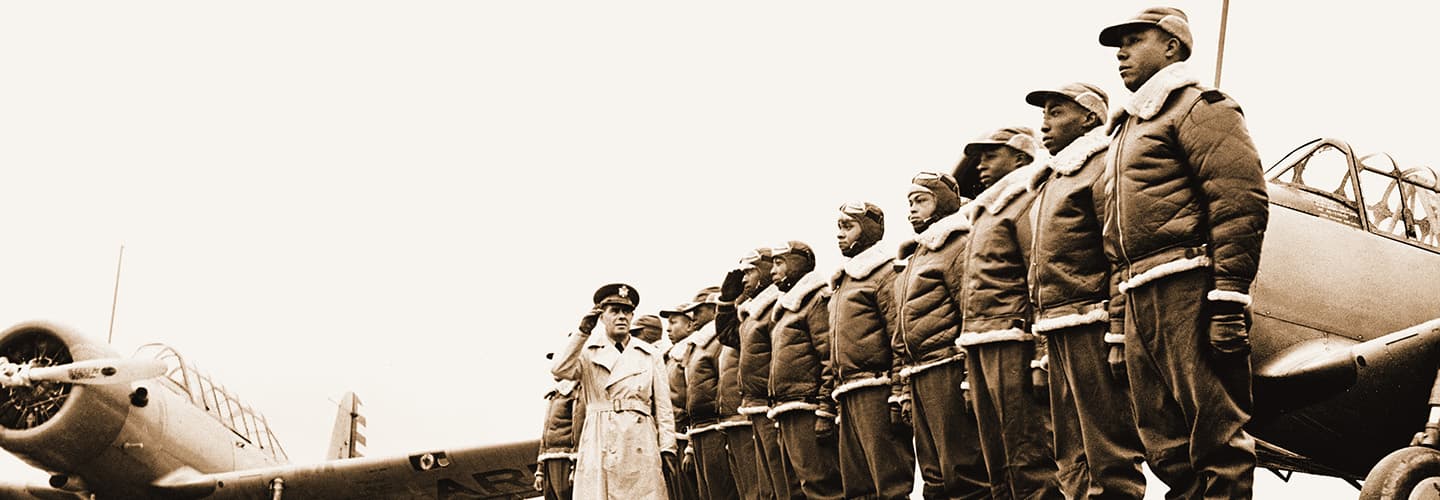On April 1, 1945, pilot Harry Stewart Jr. was in a fight for his life. He had shot down two German planes in the sky above Linz, Austria. Now a third closed in. Stewart zigzagged his P-51 Mustang fighter plane across the sky, dodging bullets.
“I was frightened to death,” recalls Stewart, now 98. “I pulled all sorts of flying tricks to try to escape him.”
The enemy pilot lost control of his plane and crash-landed.
Stewart was fighting in Europe in World War II (1939-1945). He was a member of the Tuskegee Airmen—the first Black pilots in the U.S. armed forces. Stewart explains that the pilots had to fight two different enemies.
“We were defending freedom in another country while we faced discrimination at home,” he says.
On April 1, 1945, pilot Harry Stewart Jr. was in a fight for his life. He had shot down two German planes in the sky above Linz, Austria. Now a third closed in. Stewart zigzagged his P-51 Mustang fighter plane across the sky. He was dodging enemy bullets.
“I was frightened to death,” recalls Stewart, now 98. “I pulled all sorts of flying tricks to try to escape him.”
The enemy pilot lost control of his plane and crash-landed.
Stewart was fighting in Europe in World War II (1939-1945). He was a member of the Tuskegee Airmen. They were the first Black pilots in the U.S. armed forces. Stewart explains that the pilots had to fight two different enemies.
“We were defending freedom in another country while we faced discrimination at home,” he says.

